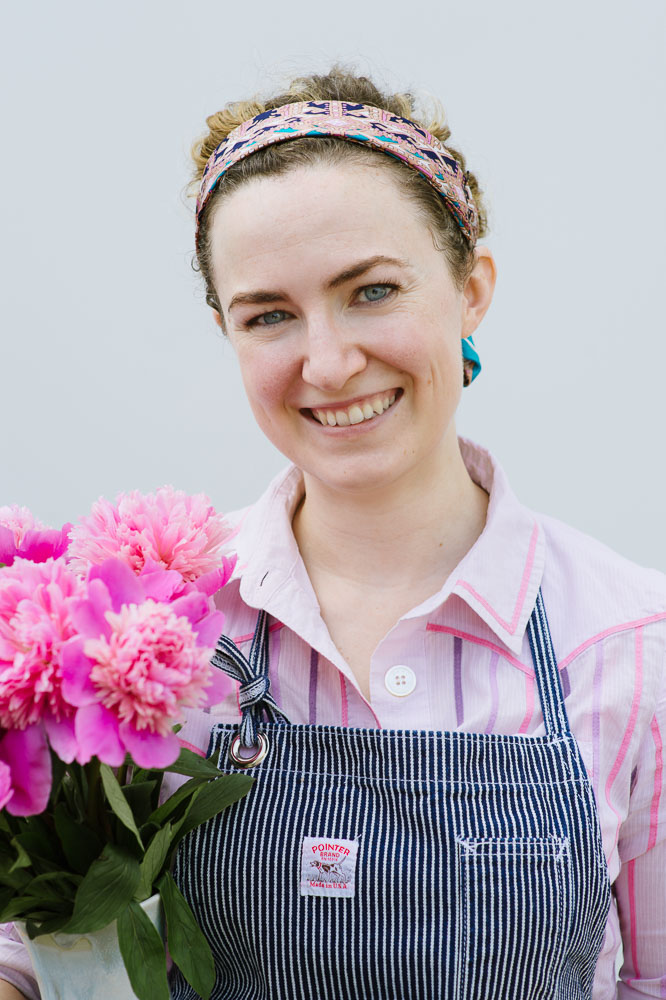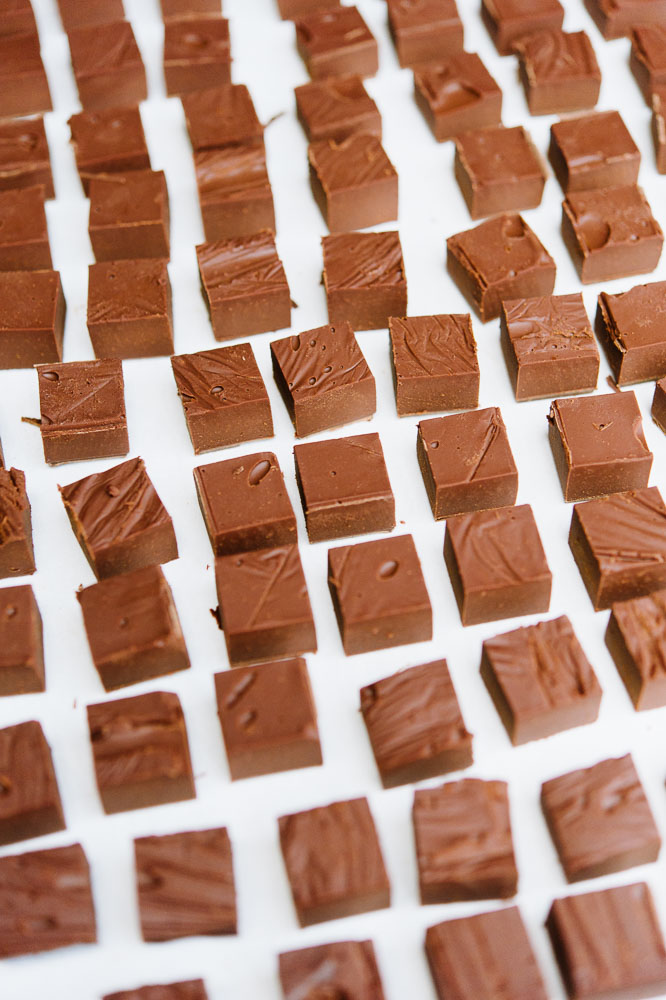Gâté Comme Des Filles
Photos by Katie Noble
Nearly two years after the Aeronaut foods hub opened, evenings at this Somerville hot spot are a pretty constant party, from the brewery at one end to Peter Ungar’s exciting new restaurant, Tasting Counter, at the other. Walking between the two, visitors who may be used to stopping for a taste of Eric Parkes’ Somerville Chocolate can now supplement their bean-to-bar fix with Alexandra Whisnant’s exquisite handmade chocolate ganaches. In December the Cambridge resident installed her small business, gâté comme des filles, in a corner of this already cozy space.
The 33-year-old chocolatier launched Gâté Comme des Filles (translation: spoiled like girls) in Paris, then shifted operations to California before returning to her hometown late last year. “I realized I wasn’t a Californian,” she says. “I missed the East Coast.”
Because finding kitchen space is so difficult for small food entrepreneurs, Whisnant initially considered approaching restaurants to see whether she could use their kitchens after hours. Then a mutual friend introduced her to Ronn Friedlander, one of Aeronaut’s founders. The former Ames Safety Envelope Company building that houses this enterprise “was better than anything I imagined,” she says. Parkes offered to share his space “an hour after meeting me. He said he had been thinking of bringing in a chocolatier.”
From the beginning, the relationship with Somerville Chocolate has been a plus. “What Eric has created is like a chocolate magnet for people,” Whisnant says, referring to Parkes. The two regularly taste each other’s chocolates. “We’re learning from each other,” she notes.
Whisnant’s beautiful, painstakingly produced bonbons in flavors ranging from Meyer lemon to coffee to Massachusetts honey walnut, are not inexpensive, commanding $22 for a 4-piece box, $43 for 9 pieces. When we spoke in January, Whisnant said people were expressing some sticker shock, “because they don’t expect to see such a luxury product here.”
By April, price had become less of an issue. She attributes some of this to Tasting Counter’s clientele (who reserve tickets to experience the restaurant’s nine-course, prix fixe $165 dinners and $55 three-course lunches); some to Somerville Chocolate’s built-in base of aficionados. “It’s not how much money you have, but how highly you value food,” she says. “I think chocolate products are way under valued now, especially when you compare them to wine.”
Whisnant also notes that couples often like to “talk up their knowledge of chocolate to impress their dates. Being in Aeronaut makes a difference, because Aeronaut is a craft brewery,” she says. And there’s always the Friday and Saturday night effect: “Everyone’s in a festive mood.”
Whisnant’s chocolate education began when she took a semester off from studying physics at Duke to study pastry at the Cordon Bleu in Paris. “Initially, I wanted to create a chocolate shop like Ladurée,” she says, referring to the French capital’s elegant patisserie that is as renowned for its magnificent window displays as for the mouthwatering confections inside. After graduating from Duke she went back to Paris to complete the Cordon Bleu’s pastry training. Then she interned for two months at Ladurée.
From Paris, Whisnant moved to northern California, to live near her older sister. She worked at Recchiutti Confections in San Francisco, then as a pastry cook at Chez Panisse. In the kitchen there she learned to appreciate chocolate “as a source that’s sustainable,” she says, and to incorporate the area’s bounty of fresh ingredients into her creations. “I tried to push us towards making more bonbons,” she says.
After two years, and with the encouragement of the Chez Panisse staff, Whisnant began making and selling her own chocolates. But she felt that she needed to understand more about running a business, so she went to business school at Cornell. While there she made chocolates that she sold at a restaurant in Ithaca.
In 2011, MBA in hand, Whisnant returned to Paris, this time as a consultant for Bain & Company. She lasted less than a year before deciding to use her work visa to start a chocolate business. She made ganaches at home and sold them at pop-ups in different locations from La Caféothèque, the first specialty coffee shop and roaster in the city, to the bookstore Shakespeare and Company. She also taught a chocolate class at a chocolate design festival. “I feel very lucky that I had this opportunity and I could run with it,” she says. But after about 15 months, she moved back to California. “I loved France but I still felt like an outsider and I knew I’d always be an outsider.” The chocolatier found kitchen space in Oakland and over the course of two years built an eight-store client base.
Having an MBA, she explains, “gives you confidence [that] it’s ok to make up your own distribution. There’s not just one way to do it.” Always wanting to maintain an air of exclusivity, Whisnant has intentionally kept production and distribution limited.
Whisnant and her assistant, Molly Wallner, work in seven- to 10-day stretches, usually for about 12 hours a day, producing roughly 2,000 chocolates per production run. Parkes generally works in the mornings and the women do afternoon-to-evening shifts, though sometimes they overlap. “We try to stay until midnight because that’s when people are here,” Whisnant explains.
Gâté Comme des Filles’ three small tempering machines sit in the front corner of Somerville Chocolate’s 390-square-foot space. Each can hold up to 100 chocolates. Whisnant explains that she prefers these machines because it only takes a half hour to temper the chocolate. On a quiet Monday morning, while Wallner methodically cuts ganache into squares, Whisnant lifts one piece at a time from the table with a dipping fork and gently lowers it into the machine. She rolls it over in the melted chocolate until it’s completely coated, lifts it out, taps off the excess and places the luscious looking square on a parchment sheet. This method is “slower than an enrober, but we have complete control,” she says. “We reject three to 10 percent of the chocolates we make.” If there is an air bubble in the coating, if a speck of sugar falls off, if the bottom is cracked – in short, “If it doesn’t look breathtakingly beautiful,” Whisnant explains – a chocolate becomes a sample.
Once a ganache has been dipped, it has to be decorated immediately. On this day, the women are making Meyer lemon ganaches. Wallner gently places a slice of candied Meyer lemon, made in-house, on each small square. The chocolates set overnight before they are sold, and are best eaten within five days.
While it is unlikely she will ever replace her sister’s yard in El Cerrito, just north of Berkeley, California as her source for Meyer lemons, Whisnant is beginning to seek out more local providers of fruits, herbs and other ingredients to flavor her ganaches. She does not have to go far for coffee, since barismo roasts its beans under the same roof. She uses honey from Barre, cream from High Lawn Farm in Lee and herbs from Cambridge Community Garden.
In early spring, nearly four months into her Somerville tenancy, Whisnant notes, “It’s starting to work out the way I envisioned. People are coming up and buying [the chocolates] out from under our noses.” In fact, demand is so high that Whisnant recently stopped shipping chocolate to retail partners and online customers outside the area, so she could focus on the local market.
Sometimes you can go home again.
Alexandra Whisnant recommends visiting her website and joining her e-mail list for the most current information on shop hours, new flavors and special holiday batches: gatecommedesfilles.fr.




